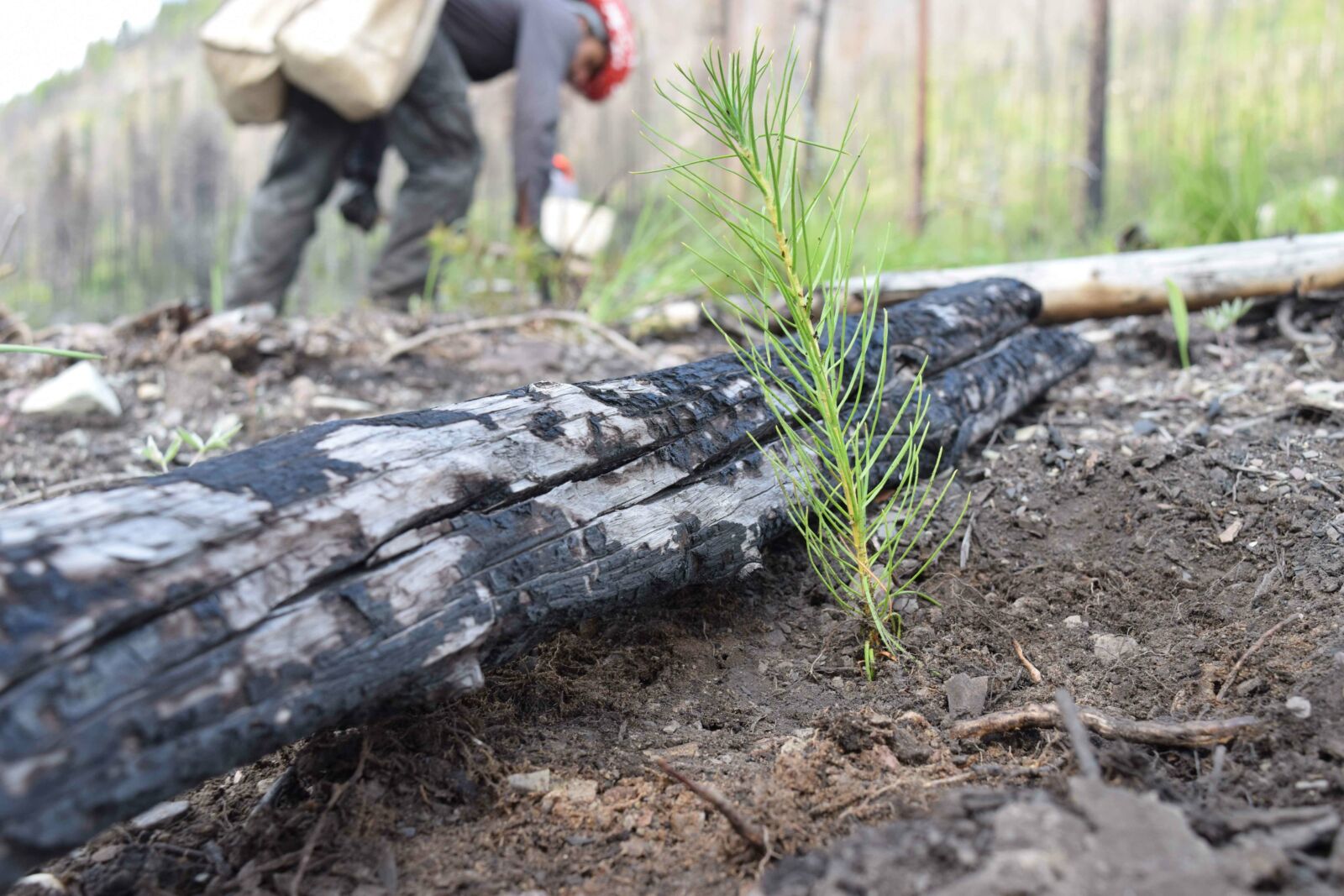Forests play a critical part to keep our environment healthy. But our forests need us more than ever – more than 1 million acres of National Forests are in need of reforestation. To bring awareness to this incredible need and the NFF’s 50 Million for our Forests campaign, we are excited to share 30 facts about reforestation.

- Tree planting improves wildlife habitat connectivity and supports biodiversity.
- Trees remove harmful pollutants from the air and act as our natural air filter.
- The seedlings we plant are collected from local seeds next to the planting site.
- Wildfire accounts for a staggering 80 percent of reforestation needs.
- More than one million acres of National Forests are in need of reforestation.
- The U.S. Forest Service accounts for climate change when deciding where and which species to plant.
- In areas where trees would not naturally regenerate, tree planting helps re-establish forest cover and improve forest health.
- The U.S. Forest Service grows seedlings for one to two years at a nursery prior to planting.
- Seedlings are planted near a microsite – tucked in or shaded area that protect the seedling.
- A professional tree planter can plant a tree in less than 10 seconds.
- The U.S. Forest Service monitors seedlings after one, three and five years of planting to ensure survival.
- At the National Forest Foundation, $1 plants 1 tree.
- Tree planting provides fresh water for millions of Americans across the country.
- Seedlings planted in a riparian area – near a river or stream – will help prevent erosion and improve water quality.
- In one year, 100 mature trees can remove 53 tons of carbon dioxide and 430 pounds of pollution from the atmosphere!
- In the U.S., forests absorb approx. 12% of the country’s carbon emissions every year.
- The average American carbon footprint is 20 tons of CO2 per year – you can offset your impact with 40 trees.
- Two trees planted will remove 1 ton of CO2 from the atmosphere over the life of those trees.
- Thanks to support from individuals, small businesses, and corporate partners, the NFF planted >7 million trees in 2021.
- In 2021, the NFF completed 38 reforestation projects, planting 27 different tree species and reforesting approximately 21,000 acres.
- Reforestation helps make our forests more resilient to future challenges like climate change and wildfire.
- Reforestation helps improve the quality of outdoor recreation for the estimated 160 million National Forest visits per year.
- The NFF is the only Congressionally-chartered organization solely focused on our National Forests.
- We plant trees in areas that have experienced a natural disturbance and only plant native species picked by U.S. Forest Service professionals.
- From longleaf pine forests in Florida to the high alpine whitebark pine forests of the West, we’re planting millions of trees every year on National Forests.
- Our National Forests provide habitat to more than 3,000 species, including more than 400 threatened or endangered species.
- We only plant on the most severely impacted forests where seedlings are unable to sprout on their own.
- After severe wildfires, prompt reforestation is important to prevent soil erosion and protect water quality in downstream rivers and lakes.
- Tree planting occurs year round, depending on the region. Some projects begin as early as January and some as late as October.
- Wildfire isn’t the only reason for reforestation on National Forests. Our projects also support recovery from insect and disease outbreaks and severe weather events, in addition to native species expansion.
As you can see, planting trees is a vital and cherished part of our work on National Forests nationwide. Planting trees is a team effort at NFF from field managers to finance officers to our communicators and more. Your unrestricted gift helps ensure the entire NFF team is strong, focused, and ready to get trees in the ground. Please give today by simply clicking here. Thank you!

